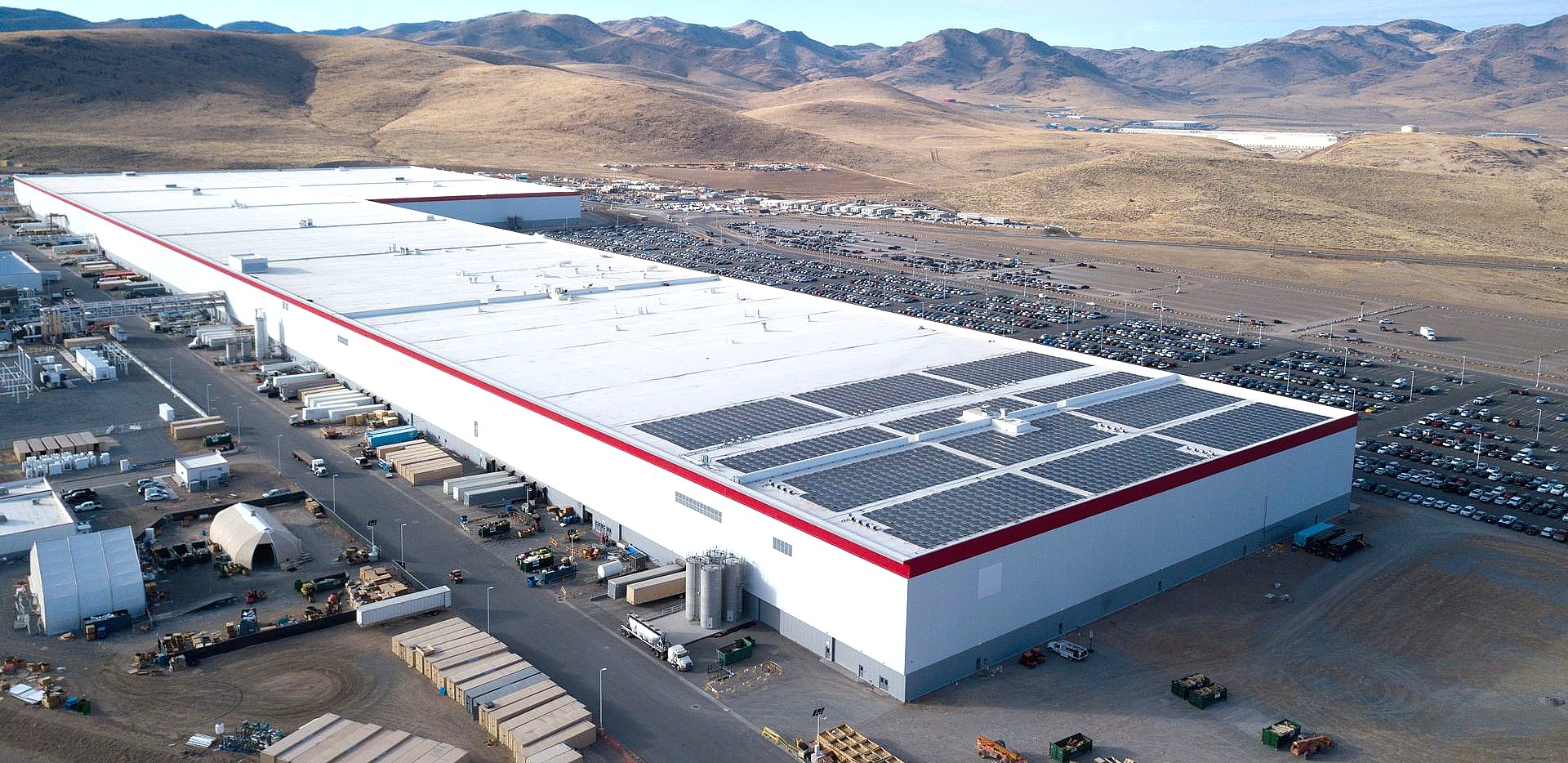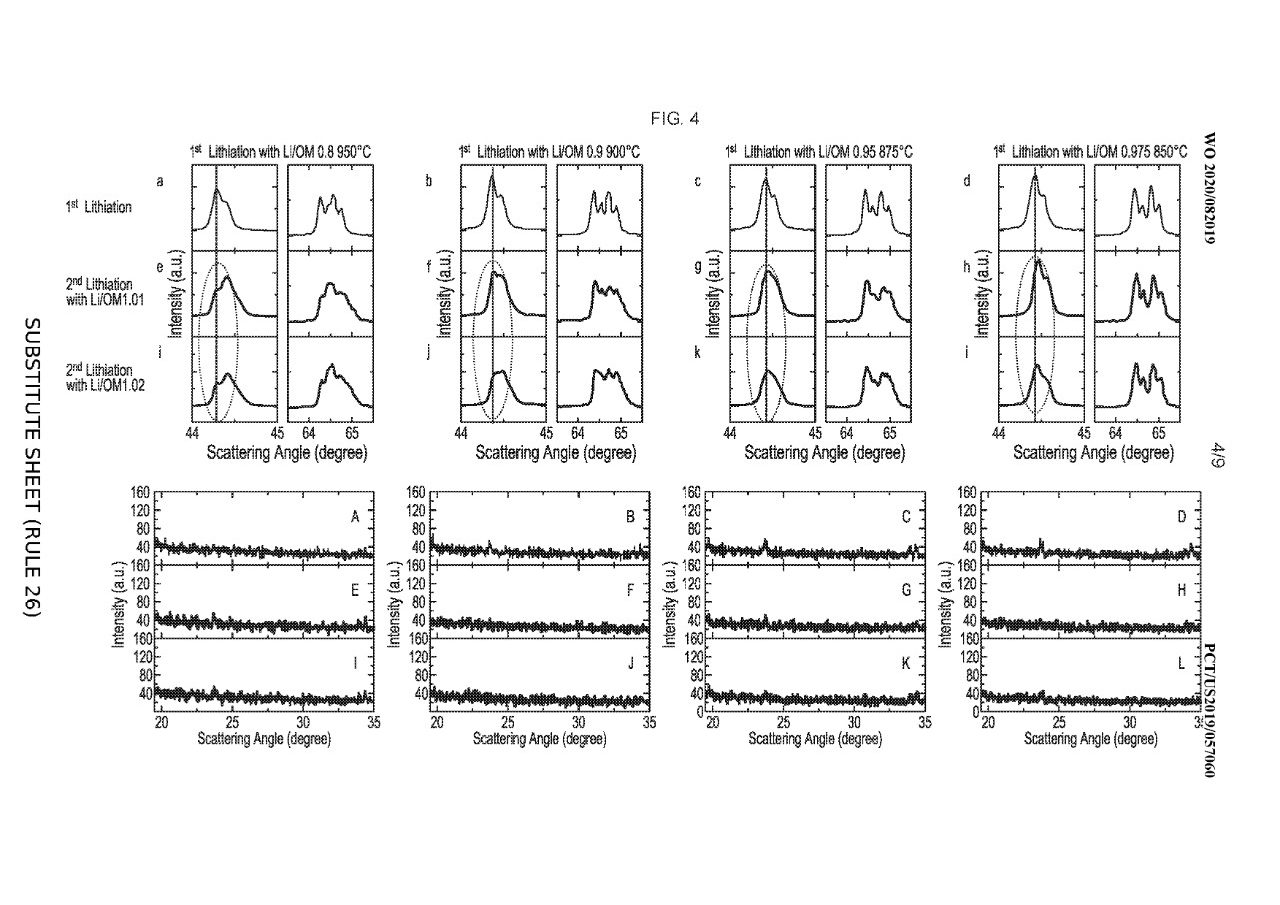

News
Tesla’s 1 million-mile battery takes a step forward with new electrode patent
A newly released patent from Tesla has teased what appears to be a step towards Elon Musk’s one-million-mile battery target. The patent describes a new lithiation process for battery cells, which has the potential to improve the quality of cells and possibly even save on costs.
Tesla has submitted a patent titled “Method for Synthesizing Nickel-Cobalt-Aluminum Electrodes.” The document outlines a new electrode synthesizing method that could be used for battery cell production. The proposed application defines an efficient heating process for Nickel-Cobalt-Aluminum (NCA) electrodes. According to the document, previous heating methods at times cause the formation of a lithium substrate known as L15AIO4, which is an impurity. Lowering the amount of lithium within a battery reduces the presence of the contamination, but also leads to “materials with inferior electrochemical properties.”
As noted in the patent, batteries would heat to a temperature high enough to allow for single crystal growth. The revised ratio of lithium to other metals would limit the formation of impurities during the first heating process. Then, the battery would be heated a second time at a temperature lower than the first heating cycle. Researchers involved in the patent noted that this process helped develop an impurity-free single crystal NCA that allowed battery cells to achieve over 4,000 charge cycles.

The patent outlines the heating process:
“Methods disclosed herein include a first lithiation step, wherein a lithium and an other metal component are present in a first lithium/other metal ratio of less than 1.0 and are sintered at a temperature between 800 and 950°C for a time period between 1 and 24 hours to obtain a first lithiated material. The method further includes a second lithiation step, wherein a lithium and a other metal component are present in a second lithium/other metal ratio and further wherein the first lithiated electrode material is sintered with additional LiOHTLO at between 650 and 760°C for a time period between 1 and 24 hours to obtain a second lithiated material.”
In summary, the use of NCA electrodes in batteries would allow for single-crystal materials to present themselves without impurities. The lack of contaminants could lead to an increased lifespan of the cells altogether, helping Tesla take a giant leap forward in its quest to produce a one-million-mile battery for its vehicles.
Interestingly enough, one of the listed names on the patent is battery expert and researcher Jeff Dahn, who has worked with Tesla in the past. Tesla summoned the help of Dahn, who leads a team of researchers at Canada’s Dalhousie University, to help the electric car maker improve its batteries. Dahn’s research has helped Tesla’s development of high-quality battery cells by inventing new electrode combinations, like the one described in this patent, and electrolyte solutions aimed at further increasing battery life.
Tesla’s batteries are always in a state of improvement, and over the years, the cells that the company utilizes for its vehicles and energy storage systems have gotten more energy-dense. Economies of scale that is made possible with facilities such as Gigafactory Nevada have also gone a long way towards helping Tesla near the $100 per kWh mark, a level that is widely considered the point where electric vehicles could achieve price parity with their internal combustion-powered counterparts.
Apart from its battery patents, Tesla has also been busy acquiring several battery companies. Among these are Maxwell Technologies and Hibar Systems, both of which were developing technologies that would allow for better battery quality and more efficient production costs. Relatively simple developments such as those described in Tesla’s recent patent help this cause too, especially since every little bit of optimization helps.
Tesla’s development of its battery technology could lead to its vehicles lasting 20 to 30 years, far longer than petrol-powered cars. It appears the company is planning to create a product line that could stay with owners for extended periods with relatively no annual maintenance. And that, together with price parity, can very well be the catalyst for society’s acceleration towards sustainability.
The full text of Tesla’s “Method for Synthesizing Nickel-Cobalt-Aluminum Electrodes” patent could be accessed in the document below.
METHOD FOR SYNTHESIZING NIC… by Joey Klender on Scribd

Elon Musk
Elon Musk and Tesla AI Director share insights after empty driver seat Robotaxi rides
The executives’ unoccupied tests hint at the rapid progress of Tesla’s unsupervised Robotaxi efforts.

Tesla CEO Elon Musk and AI Director Ashok Elluswamy celebrated Christmas Eve by sharing personal experiences with Robotaxi vehicles that had no safety monitor or occupant in the driver’s seat. Musk described the system’s “perfect driving” around Austin, while Elluswamy posted video from the back seat, calling it “an amazing experience.”
The executives’ unoccupied tests hint at the rapid progress of Tesla’s unsupervised Robotaxi efforts.
Elon and Ashok’s firsthand Robotaxi insights
Prior to Musk and the Tesla AI Director’s posts, sightings of unmanned Teslas navigating public roads were widely shared on social media. One such vehicle was spotted in Austin, Texas, which Elon Musk acknowleged by stating that “Testing is underway with no occupants in the car.”
Based on his Christmas Eve post, Musk seemed to have tested an unmanned Tesla himself. “A Tesla with no safety monitor in the car and me sitting in the passenger seat took me all around Austin on Sunday with perfect driving,” Musk wrote in his post.
Elluswamy responded with a 2-minute video showing himself in the rear of an unmanned Tesla. The video featured the vehicle’s empty front seats, as well as its smooth handling through real-world traffic. He captioned his video with the words, “It’s an amazing experience!”
Towards Unsupervised operations
During an xAI Hackathon earlier this month, Elon Musk mentioned that Tesla owed be removing Safety Monitors from its Robotaxis in Austin in just three weeks. “Unsupervised is pretty much solved at this point. So there will be Tesla Robotaxis operating in Austin with no one in them. Not even anyone in the passenger seat in about three weeks,” he said. Musk echoed similar estimates at the 2025 Annual Shareholder Meeting and the Q3 2025 earnings call.
Considering the insights that were posted Musk and Elluswamy, it does appear that Tesla is working hard towards operating its Robotaxis with no safety monitors. This is quite impressive considering that the service was launched just earlier this year.
Elon Musk
Starlink passes 9 million active customers just weeks after hitting 8 million
The milestone highlights the accelerating growth of Starlink, which has now been adding over 20,000 new users per day.

SpaceX’s Starlink satellite internet service has continued its rapid global expansion, surpassing 9 million active customers just weeks after crossing the 8 million mark.
The milestone highlights the accelerating growth of Starlink, which has now been adding over 20,000 new users per day.
9 million customers
In a post on X, SpaceX stated that Starlink now serves over 9 million active users across 155 countries, territories, and markets. The company reached 8 million customers in early November, meaning it added roughly 1 million subscribers in under seven weeks, or about 21,275 new users on average per day.
“Starlink is connecting more than 9M active customers with high-speed internet across 155 countries, territories, and many other markets,” Starlink wrote in a post on its official X account. SpaceX President Gwynne Shotwell also celebrated the milestone on X. “A huge thank you to all of our customers and congrats to the Starlink team for such an incredible product,” she wrote.
That growth rate reflects both rising demand for broadband in underserved regions and Starlink’s expanding satellite constellation, which now includes more than 9,000 low-Earth-orbit satellites designed to deliver high-speed, low-latency internet worldwide.
Starlink’s momentum
Starlink’s momentum has been building up. SpaceX reported 4.6 million Starlink customers in December 2024, followed by 7 million by August 2025, and 8 million customers in November. Independent data also suggests Starlink usage is rising sharply, with Cloudflare reporting that global web traffic from Starlink users more than doubled in 2025, as noted in an Insider report.
Starlink’s momentum is increasingly tied to SpaceX’s broader financial outlook. Elon Musk has said the satellite network is “by far” the company’s largest revenue driver, and reports suggest SpaceX may be positioning itself for an initial public offering as soon as next year, with valuations estimated as high as $1.5 trillion. Musk has also suggested in the past that Starlink could have its own IPO in the future.
News
NVIDIA Director of Robotics: Tesla FSD v14 is the first AI to pass the “Physical Turing Test”
After testing FSD v14, Fan stated that his experience with FSD felt magical at first, but it soon started to feel like a routine.

NVIDIA Director of Robotics Jim Fan has praised Tesla’s Full Self-Driving (Supervised) v14 as the first AI to pass what he described as a “Physical Turing Test.”
After testing FSD v14, Fan stated that his experience with FSD felt magical at first, but it soon started to feel like a routine. And just like smartphones today, removing it now would “actively hurt.”
Jim Fan’s hands-on FSD v14 impressions
Fan, a leading researcher in embodied AI who is currently solving Physical AI at NVIDIA and spearheading the company’s Project GR00T initiative, noted that he actually was late to the Tesla game. He was, however, one of the first to try out FSD v14.
“I was very late to own a Tesla but among the earliest to try out FSD v14. It’s perhaps the first time I experience an AI that passes the Physical Turing Test: after a long day at work, you press a button, lay back, and couldn’t tell if a neural net or a human drove you home,” Fan wrote in a post on X.
Fan added: “Despite knowing exactly how robot learning works, I still find it magical watching the steering wheel turn by itself. First it feels surreal, next it becomes routine. Then, like the smartphone, taking it away actively hurts. This is how humanity gets rewired and glued to god-like technologies.”
The Physical Turing Test
The original Turing Test was conceived by Alan Turing in 1950, and it was aimed at determining if a machine could exhibit behavior that is equivalent to or indistinguishable from a human. By focusing on text-based conversations, the original Turing Test set a high bar for natural language processing and machine learning.
This test has been passed by today’s large language models. However, the capability to converse in a humanlike manner is a completely different challenge from performing real-world problem-solving or physical interactions. Thus, Fan introduced the Physical Turing Test, which challenges AI systems to demonstrate intelligence through physical actions.
Based on Fan’s comments, Tesla has demonstrated these intelligent physical actions with FSD v14. Elon Musk agreed with the NVIDIA executive, stating in a post on X that with FSD v14, “you can sense the sentience maturing.” Musk also praised Tesla AI, calling it the best “real-world AI” today.








